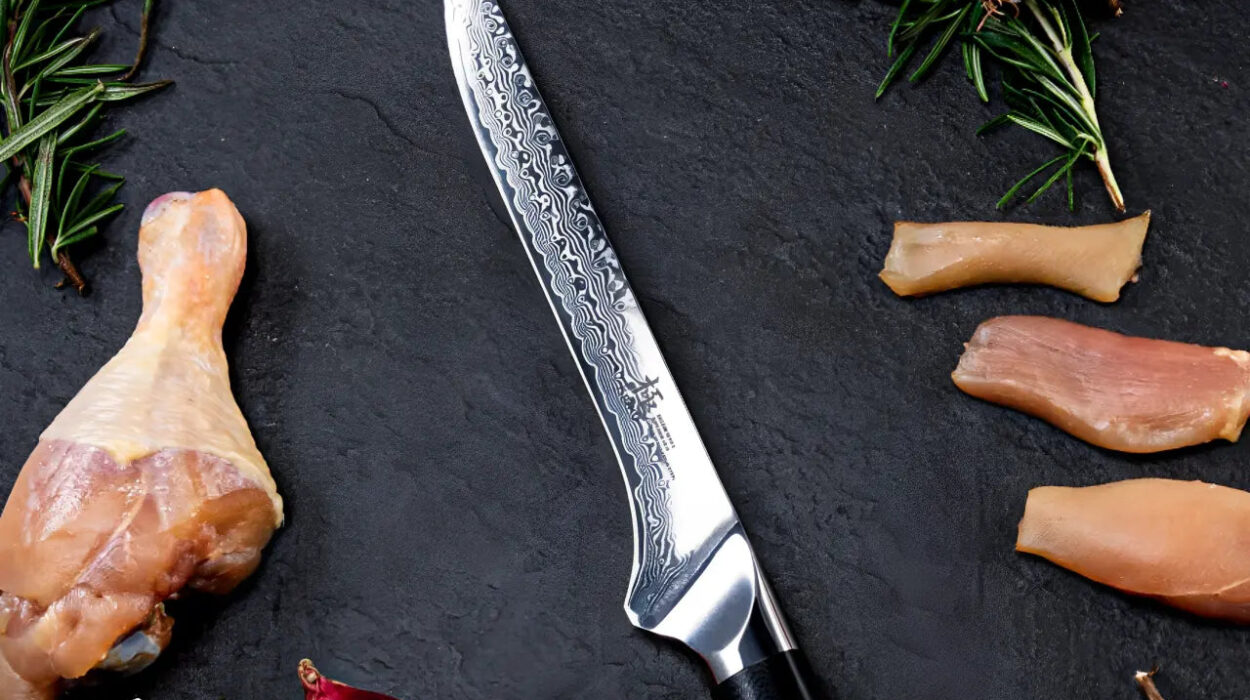In the realm of culinary arts, the use of a boning knife is indispensable. Whether you’re a professional chef or a home cook, understanding how to properly use a boning knife can elevate your skills in the kitchen. However, there are common mistakes with boning knife that even seasoned cooks can make. Recognizing these errors is the first step towards avoiding them and ensuring that you get the most out of this essential kitchen tool.

The Importance of a Boning Knife
A boning knife is specifically designed to remove bones from meat, poultry, and fish. Its narrow, flexible blade allows for precise cuts, minimizing waste and preserving the quality of the meat. However, not using it correctly can lead to poor results and even accidents.
The Benefits of Using a Boning Knife Correctly
Using a boning knife properly can significantly enhance your culinary experience. Not only does it make the process of deboning faster and more efficient, but it also helps in maintaining the integrity of the meat. A well-executed deboning process can enhance the flavor and presentation of your dish.
1. Choosing the Wrong Knife
One of the common mistakes with boning knife is selecting the wrong type of knife for the task. It’s crucial to use a boning knife rather than a chef’s knife or a paring knife, as the design of the boning knife is specifically suited for removing bones.
2. Incorrect Grip and Handling
The way you hold the knife significantly affects your control and precision. Ensure you have a firm but comfortable grip on the handle, allowing you to maneuver the blade with ease.
3. Not Keeping the Knife Sharp
A dull knife requires more force and can lead to accidents. Regularly sharpening your boning knife will keep it effective and safe to use. For sharpening tips, visit professional tips.
4. Applying Excessive Force
Many people mistakenly apply too much pressure when using a boning knife, which can damage the meat or even cause the knife to slip. Use gentle, controlled movements for the best results.
5. Inadequate Preparation
Not preparing the meat properly before deboning is another mistake. Ensure the meat is properly thawed and positioned for optimal access to the bones.
Essential Techniques for Boning Knife Use
Mastering the use of a boning knife involves understanding several key techniques. These techniques not only help in avoiding mistakes but also improve the overall quality of your culinary work.
6. Understanding the Anatomy of Meat
Having a basic knowledge of the structure of the meat you’re working with can guide you in making precise cuts. Identifying the location of bones and joints helps in planning your cuts effectively.
7. Practicing Proper Cutting Techniques
Utilize long, smooth strokes rather than short, chopping motions. This technique minimizes tearing and ensures cleaner cuts, preserving the meat’s texture.
8. Cleaning the Knife Regularly
Residue can build up on your knife, affecting its performance. Regularly cleaning your boning knife ensures it remains effective and prolongs its lifespan.
Choosing the Right Boning Knife
Selecting a boning knife that fits your hand comfortably and suits your specific needs is crucial. Consider the flexibility of the blade and the size that best matches your typical tasks. For more in-depth guidance, refer to narrow boning knife options.
9. Ignoring Safety Precautions
Neglecting safety measures can lead to accidents in the kitchen. Always cut away from your body and ensure your fingers are clear of the blade’s path.
10. Not Using a Cutting Board
Using a proper cutting board provides a stable surface that helps in controlling the knife and preventing it from slipping.
Advanced Boning Knife Techniques
For those looking to refine their skills, mastering advanced techniques can greatly improve your proficiency with a boning knife.
11. Filleting Fish
Filleting fish requires precision and a keen understanding of the fish’s anatomy. A boning knife is perfect for making clean cuts along the backbone and removing the fillets intact.
12. Deboning Poultry
Deboning poultry involves removing the bones without damaging the meat. This technique is essential for dishes that require boneless chicken for marinating or stuffing.
13. Trimming Fat and Membranes
Removing excess fat and membranes improves the texture and flavor of the meat. A boning knife’s sharp blade is ideal for this delicate task.
Conclusion
Avoiding common mistakes with boning knife can transform your culinary skills, making the process of deboning more efficient and enjoyable. With practice and attention to detail, you can master the use of this essential kitchen tool.

FAQs
What is the primary use of a boning knife?
A boning knife is primarily used for removing bones from meat, poultry, and fish, offering precision and control.
How often should I sharpen my boning knife?
Regular maintenance is key. Sharpen your boning knife as needed, typically every few weeks, to maintain its effectiveness.
Can a boning knife be used for vegetables?
While primarily designed for meat, a boning knife can be used for certain vegetables, though it’s not the ideal tool for this purpose.
This article contains affiliate links. We may earn a commission at no extra cost to you.


